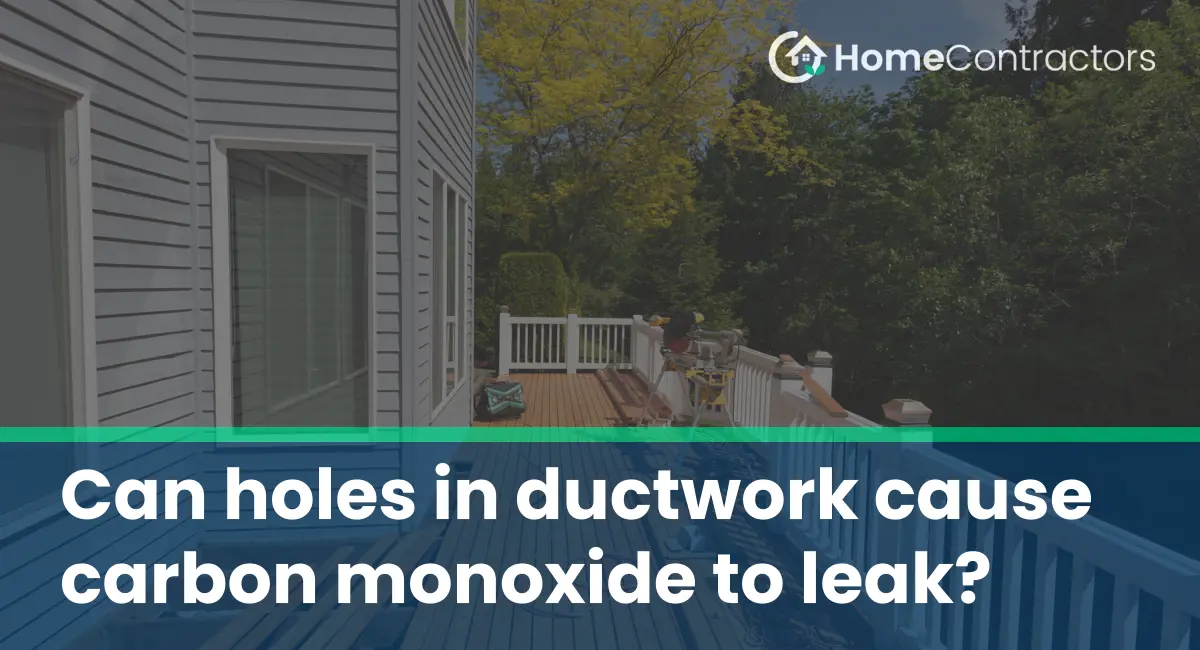Ductwork, the interconnected system of metal or fiberboard channels used to distribute air throughout a building, plays a crucial role in maintaining proper indoor air quality and temperature control. However, if there are holes or leaks in this system, it can lead to various complications and potential health hazards. One such concern is the possibility of carbon monoxide (CO) leakage, a highly toxic gas that can have severe consequences for human health. In this article, we will explore the potential risks posed by holes in ductwork and their relationship to carbon monoxide leakage, emphasizing the importance of regular inspections and necessary maintenance to ensure safety.
The Significance of Carbon Monoxide (CO) in Indoor Spaces:
Carbon monoxide is a colorless, odorless, and tasteless gas that is produced by the incomplete combustion of fossil fuels, such as gas, oil, coal, and wood. It is a byproduct of various household appliances, including furnaces, stoves, water heaters, and even automobiles. When these appliances are functioning correctly, carbon monoxide is typically vented safely outdoors. However, if there are gaps or damage in the ductwork, the gas may accumulate and find its way into living spaces rather than being expelled.
Understanding the Role of Ductwork:
Ductwork is responsible for distributing conditioned air, including heating, ventilation, and air conditioning (HVAC), throughout a building. It acts as a conduit for air movement, ensuring it reaches all areas efficiently and without restriction. However, any holes or gaps in the ductwork compromise this function, leading to associated performance issues and potential CO leakage.
How Holes in Ductwork Can Facilitate Carbon Monoxide Leakage:
- Backdrafting: A primary concern with holes in the ductwork is the potential for backdrafting. Backdrafting occurs when negative pressure, often due to exhaust fans, can draw air back into the ductwork from the surrounding environment. This reverse airflow may result in carbon monoxide being pulled into the ducts and circulated throughout the building.
- Air Infiltration: Holes in ductwork can also allow outside air, including carbon monoxide, to infiltrate the system. If the building is located near sources of carbon monoxide emissions, such as heavy traffic or industrial facilities, the risk of CO entering the ducts through holes becomes even more significant.
- Insufficient Ventilation: Proper ventilation is crucial in minimizing carbon monoxide accumulation. However, holes in the ductwork can disrupt the airflow patterns and reduce overall ventilation effectiveness, increasing the likelihood of CO buildup.
Addressing the Issue: Inspections and Maintenance:
To mitigate the risks associated with holes in ductwork and the potential for carbon monoxide leakage, regular inspections and maintenance are essential.
- Professional Inspections: Engaging certified professionals to conduct regular inspections of the ductwork is crucial. They will identify and address any leaks, gaps, or damage in the system. Additionally, they will ensure that proper venting and ventilation mechanisms are installed.
- Repairs or Replacement: In case any holes or leaks are detected during inspections, prompt repairs or replacements should be carried out to restore the integrity of the ductwork. Depending on the severity and extent of the damage, repairs may involve sealing holes or replacing entire sections of ductwork.
- Carbon Monoxide Detectors: Installing and regularly testing carbon monoxide detectors in appropriate areas of a building is a critical safety measure. These detectors will alert occupants if unsafe levels of CO are present, allowing them to evacuate and seek assistance promptly.
Holes in ductwork can indeed cause carbon monoxide to leak into indoor spaces, posing severe health risks if left unaddressed. It is important to recognize the dangers associated with CO exposure and take necessary precautions to ensure the safety of occupants. Regular inspections, timely repairs, and adequate ventilation play key roles in preventing carbon monoxide leakage, maintaining healthy indoor environments, and preserving the integrity of the ductwork system. Prioritizing proactive measures can significantly reduce the potential dangers associated with holes in ductwork and protect against the harmful effects of carbon monoxide.
